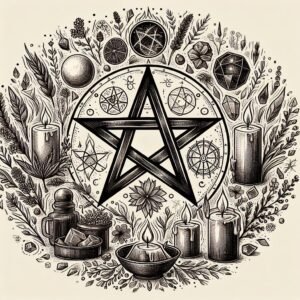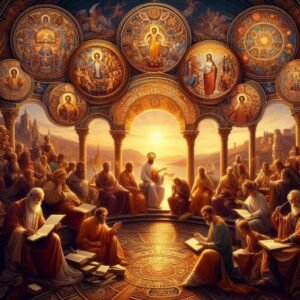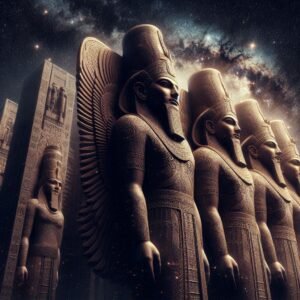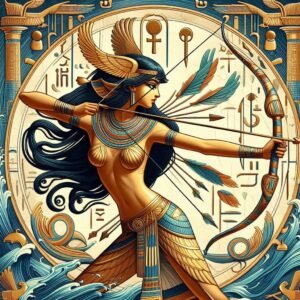
Ancient Mesopotamia, often referred to as the cradle of civilization, was home to a rich tapestry of religions and mythologies that evolved over millennia.
The Sumerians
The earliest religious practices can be traced back to around 6000 BCE, with the Sumerians, who worshipped a pantheon of gods representing natural forces and celestial bodies. The earliest religious practices of the Sumerians were deeply intertwined with their understanding of the natural world and the cosmos. They worshipped a pantheon of gods, each representing different natural forces and celestial bodies. Key deities included An, the god of the heavens; Enlil, the god of wind and storm; and Enki, the god of water and human culture. The Sumerians believed these gods controlled all aspects of life and the universe, and their worship involved complex rituals, offerings, and the construction of grand temples known as ziggurats. These religious practices shaped their daily lives and influenced the development of later Mesopotamian religions.
The Akkadians
By the 3rd millennium BCE, the Akkadians had assimilated Sumerian beliefs and expanded upon them, creating a more structured and complex pantheon. This integration led to the prominence of deities such as Enlil, the god of wind and storm, who was considered one of the most powerful gods in the Mesopotamian pantheon. Enlil was believed to have control over the destinies of gods and humans alike, and his temple in Nippur became a central religious site.
Inanna, known to the Akkadians as Ishtar, was another significant deity who rose to prominence during this period. She was the goddess of love, war, and fertility, embodying both the nurturing aspects of life and the destructive power of conflict. Inanna’s worship spread widely, and she became one of the most venerated deities in Mesopotamia, with major cult centres in Uruk and other cities.
The Akkadians also introduced new myths and rituals, blending their own traditions with those of the Sumerians. This cultural synthesis enriched the religious landscape of Mesopotamia, influencing not only the Akkadian Empire but also subsequent civilizations in the region.
The Babylonians and Assyrians
The subsequent Babylonian and Assyrian periods, spanning from the 2nd to the 1st millennium BCE, witnessed significant advancements in religious traditions.
During this time, the Babylonian god Marduk rose to prominence, particularly after the reign of Hammurabi, becoming the chief deity of Babylon. Marduk’s supremacy was solidified through the Enûma Eliš, a creation myth that depicted him as the victor over the primordial chaos.
Similarly, in Assyria, the god Ashur became the central figure, reflecting the political and military might of the Assyrian Empire.
These periods also saw the codification of religious practices and myths, which were often inscribed on clay tablets in cuneiform script. The religious landscape was characterized by a complex pantheon of gods, each associated with different aspects of life and nature, and the rituals and festivals dedicated to these deities played a crucial role in societal cohesion.
This intricate web of beliefs shaped the spiritual life of Mesopotamians and influenced their social, political, and cultural landscapes, leaving a lasting legacy on the ancient world.
Subscribe to our post updates - Don't miss a thing!!







